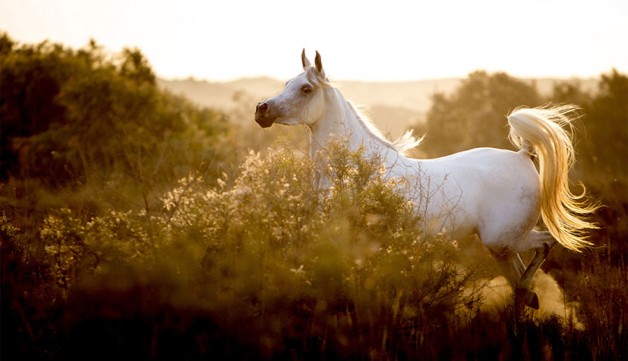By Karen Wolfsdorf, DVM
Nature has timed the mare’s breeding season to maximize her foal’s chances of survival during winter. This evolution has led the mare to be a long-day, seasonally polyestrous (meaning her estrous cycles depend on the season) animal whose regular ovulatory cycles occur in response to increasing day length. During winter, or increased periods of darkness, the small pineal gland in the brain releases the hormone melatonin, which plays a pivotal role in seasonality of reproduction. The exact mechanism by which melatonin acts, however, is unclear.
At the same time, the mare’s hypothalamic-pituitary axis begins changing. It secretes less gonadotropin-releasing hormone (GnRH, which stimulates ovarian follicle development) and releases minimal levels of luteinizing hormone (LH, a gonadotropin that facilitates follicle maturation and ovulation, or egg release), and waves of follicular development cease in most mares. We call this period anestrus, because the mare’s estrous cycle has paused. As day length and photoperiod (amount of sunlight) increase, the transitional period—the phase between winter anestrus and the ovulatory season—ensues. This can last 60 to 80 days.
As days continue to lengthen, melatonin production decreases and GnRH secretion increases. This causes the anterior pituitary gland to begin releasing more gonadotropins, particularly LH. As ovarian activity increases, follicles grow and regress, causing the erratic behavior characteristic of mares in estrus.
Factors such as latitude, climate, age, body condition, and nutrition can cause the onset of fall transition, duration of winter anestrus, and onset of spring transition to vary greatly between and within mare groups. Lower latitudes, warmer ambient temperatures, green grass, and an upward plane of nutrition seem to hasten the natural transition out of the winter anestrus period, and young mares tend to transition earlier than older mares. The early transition phase is characterized by the development of several small follicles (>20 mm) that become atretic (regress and do not ovulate). Then, during late transition, one to three more anovulatory follicular waves (in which follicles develop but then do not ovulate) occur, each with a larger dominant follicle (>35mm) that regresses. Normal cyclicity returns with the first ovulation.
In some sectors of the industry (horse racing, for instance), breeders face economic pressure to produce foals early in the year. Kick-starting cyclicity early, before mares are typically reproductively active, means having more estrous cycles to work with and potentially a greater number of chances to get pregnant or, in the case of embryo transfer, recover embryos per season. Therefore, veterinarians and breeders have invested many resources toward inducing earlier cyclicity.
One of the most common methods they use to advance the transitional period and extend the breeding season is to artificially increase the photoperiod. Scientists have done extensive research to determine the optimum duration of daylight and intensity, and most agree that a minimum of 14.5 hours of continuous light and 107 lux (100-watt bulb) lighting is ideal. The key factor in how mares respond to light is the decreased duration of darkness. In some cases, mares left in darkness for 9.5 hours and exposed to lights on timers, if the mares are inside, for an hour before being returned to darkness respond the same way as those exposed to light continuously.
It is important to realize that these protocols, however, just hasten the transitional period’s onset and that to produce this shift, treatment must be initiated for a 60-day period. If light protocols are not an option, then breeders must wait for the natural day length to increase or manipulate the mare’s cycle pharmacologically.




Thank you so much for your work and love for these magnificent Arabians.